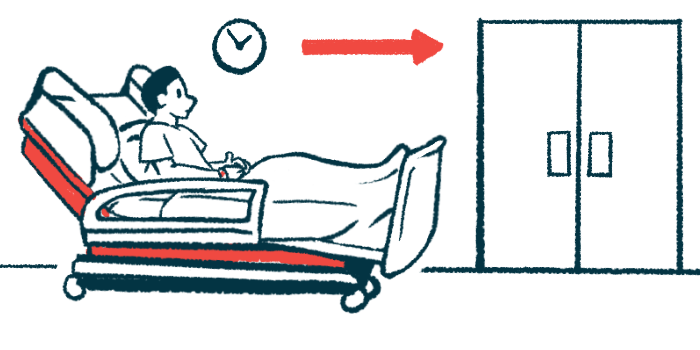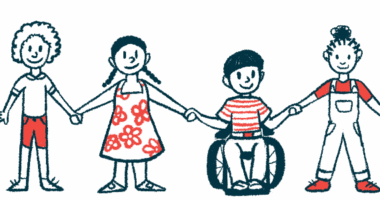Surgery for scoliosis slows SMA lung function decline: Study

Surgery to correct scoliosis, a sideways curvature of the spine, slowed lung function decline in people with spinal muscular atrophy (SMA) type 2 and 3 who had yet to receive treatment, a study focusing on secondary outcomes reported.
While all participants reported overall satisfaction with posture and physical appearance after surgery, gross motor and upper limb function didn’t change. Patients also experienced weight loss; pain, particularly in the hips; and unmet healthcare needs after surgery.
Based on a post-surgery focus group meeting with patients and parents, researchers suggested improvements including the need for physiotherapy, timely wheelchair and occupational therapy after surgery, and psychological support for patients, parents, and siblings.
The study, “Secondary outcomes of scoliosis surgery in disease-modifying treatment-naïve patients with spinal muscular atrophy type 2 and nonambulant type 3,” was published in the journal Muscle & Nerve.
Almost all SMA patients develop scoliosis, an abnormal sideways curvature of the spine caused by weakness in the back muscles supporting the spine’s position. Scoliosis can cause breathing difficulties because the lungs have less room to expand. It can also reduce mobility, which causes joints to stiffen or become displaced. Patients can wear braces to help support the spine and ribs, but many require surgery to correct their scoliosis to ease breathing and improve mobility.
Recommended Reading

The importance of a knowledgeable medical team to an SMA patient
Understanding secondary outcomes
While most studies on scoliosis surgery focus on the primary outcome — correcting the spinal curve — research on secondary outcomes is limited.
“A better understanding of expected outcomes after scoliosis surgery would provide significant insights to improve counseling for families and patients with SMA,” the researchers wrote.
The team in the U.K. investigated changes in lung and motor function, weight, pain, and satisfaction among people with SMA who had undergone scoliosis surgery.
They reviewed the medical records of 26 people with SMA type 2 and six with SMA type 3 who were nonambulant, or unable to walk without assistance. Phone interviews and family focus groups were conducted to assess post-surgical satisfaction. At the time of the study, none of the participants had received a disease-modifying therapy.
Across all patients, the mean annual rate of lung function decline significantly dropped to 3.3% after surgery from 7.4% before surgery. Results were similar for those with SMA type 2 (3.2% vs. 6.9%) and SMA type 3 (4.6% vs. 10.4%).
Gross motor function as assessed by the Hammersmith Functional Motor Scale (HFMS) showed no significant differences between the mean annual rate of decline before and after surgery. These findings were seen across the group and among those with SMA type 2 and 3 when evaluated separately.
The mean annual decline in upper limb function as indicated by the Revised Upper Limb Module was also similar before and after surgery.
In the 12 patients who had HFMS scores available following surgery, an immediate decline in motor function was observed, with a median loss of 6.5 points on the scale. However, upper limb function appeared to be less affected than other areas of motor function.
The mean annual weight before surgery was relatively stable among SMA type 2 patients but declined in those with SMA type 3 who could not walk. After surgery, weight dropped in 16 patients (50%) overall, especially in the SMA type 2 group. Five (31%) needed food supplements after surgery, and one SMA type 2 patient who lost more than 5% of total weight required a feeding tube.
Recommended Reading

SMA families struggle with health information literacy: Study
Need for added support
Post-surgical pain, especially hip pain, was reported in 13 patients (40%). Eight of them received pain medications, two were treated with steroids injected into joints, and one required additional surgery to remove the top of the upper leg bones (bilateral femoral head osteotomy).
Seven parents and three patients older than 16 engaged in phone interviews. All rated the surgical procedure as very successful, with nine reporting major improvements in posture and physical appearance and one noting moderate improvement. All said the procedure met their expectations and that they would recommend it to others. Despite these findings, seven reported problems, such as pain, reduced mobility, and unmet care needs after surgery.
Three parents and four patients attended a family focus group meeting to provide feedback. Suggested improvements were the need for physiotherapy before and after surgery, timely wheelchair and occupational therapy assistance after surgery, and psychological support for patients, parents, and siblings.
“Our study expands the knowledge on secondary outcomes of scoliosis surgery in SMN-targeting treatment-naïve SMA type 2 and nonambulant SMA type 3 patients,” the scientists concluded. “It shows a positive impact on respiratory function and overall satisfaction with posture and physical appearance, but a negative impact on motor function, weight, pain, mobility, and care needs.”
The post Surgery for scoliosis slows SMA lung function decline: Study appeared first on SMA News Today.



